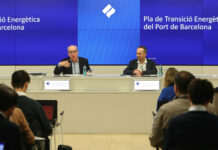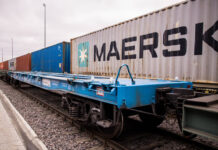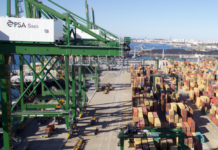
Pacific International Lines (PIL) is advancing its fleet renewal program with an order for five new 13,000 TEU container vessels, each equipped with liquefied natural gas (LNG) dual-fuel engines.
These neo-Panamax vessels, to be constructed by Hudong Zhonghua Shipyard, a leading Chinese shipbuilder, are scheduled for delivery in late 2026.
Designed strongly emphasising efficiency, safety, and sustainability, the vessels will offer flexibility to adapt to various voyages, weather conditions, and load capacities. Their dual-fuel engines and auxiliaries will allow LNG and low-sulfur fuel oil operations.
“These latest orders are part of PIL’s fleet renewal strategy for larger and more eco-friendly vessel types. Together with another eight vessels we currently have under construction, we now have 13 new vessels that will contribute significantly towards our decarbonisation goal of net zero emissions by 2050. As part of our commitment to putting customers first, we are continually optimising our fleet with newer and more advanced vessels to better serve customers in our key markets. For instance, the vessels will have a high refrigerated container capacity payload to support our services for the transport of fresh fruit, vegetables, seafood, meat and pharmaceuticals,” stated Lars Kastrup, CEO of PIL.
Incorporating cutting-edge technology and energy-saving innovations, the vessels will feature an optimized hull form, variable-frequency drive (VFD) motors for larger pumps and ventilation blowers, energy-efficient LED lighting, and advanced hull coatings. They will fully comply with the International Maritime Organization’s (IMO) Energy Efficiency Design Index (EEDI) for newbuilds and the Carbon Intensity Indicator (CII).
Additionally, the vessels will integrate enhanced digitalization, including Artificial Intelligence (AI) and Internet of Things (IoT) technologies, to automate tasks and improve operational efficiency. These advancements will contribute to safer and more efficient operations, providing a modern working environment and improving the welfare of seafarers.
The digital features of these vessels will further strengthen PIL’s Centre for Maritime Efficiency, optimizing vessel operations and routes, enhancing safety and security, and reducing energy consumption.
PIL is also currently constructing four 14,000 TEU and four 8,200 TEU LNG dual-fuel container vessels, with the first two 14,000 TEU vessels expected to be delivered later this year. This order of innovative vessels highlights PIL’s commitment to leveraging expertise and technology for efficient and sustainable maritime solutions.





